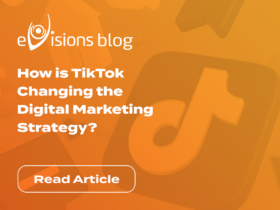Achieving 276% y-o-y Blog Traffic Growth with Topical Authority [Case Study]
14.08.2024Struggling to break into a competitive niche? Topical authority can…
This case study explores how we helped one of our clients to transform their German blog section to establish themselves as a trusted authority. This strategic change substantially improved their online visibility and user engagement. The last 3 months (year-over-year) saw an impressive increase in blog traffic of 276%.
Clicks and Impressions in the last 16 months. Source: Google Search Console
In this case study we will cover:
Disclaimer: This case study of one of our clients has been anonymized. The client works within the German automotive industry.
Our client operates within a highly competitive niche: the German car industry. It is an industry with significant financial potential, and therefore, numerous players try to gain traffic for related search terms. It is difficult to break into this niche and rank at the top of Google.
Despite our clients' expertise, the German blog section initially had only fifteen blog articles that were not driving significant traffic. This was due to the fact that these articles lacked in-depth content, did not target relevant keywords and were missing content clusters. This altogether led to poor visibility in search engine results.
The primary goal for the blog section was clear: creating authoritative and business-relevant content that would drive high SEO traffic.
steps to gain Topical Authority
With the SEO-tool Ahrefs, we conducted a comprehensive analysis to identify content gaps and opportunities including detailed keyword research and competitive analysis. The content strategy was designed to address the most pressing questions and needs of potential customers. Topics were prioritized based on their relevance to our clients’ business, search volume, and the potential to drive traffic.
example for a keyword analysis on the topic “car loan”
Similar keywords were clustered together based on their thematic or semantic relationships. This helped in understanding how various keywords interrelate, which guided the content creation to target multiple related terms. This targeted approach ensured that each piece of content would contribute to building a comprehensive topical map.
Based on the clustering a topical map was created which helped to organize and link related content visually. A key component of this strategy involved creating pillar content and supporting content. Pillar content is comprehensive, authoritative, and covers a broad topic in depth. Supporting content consists of narrower, related articles that link back to the pillar content, creating a robust internal linking structure that signals topical authority to search engines.
Below you can see a simplified version of a topical map:
(simplified) visualization of a topical map
In this example, the pillar content is an in-depth article on "Car loan", which provides a detailed overview of the processes, regulations, and considerations involved.
Supporting content articles include specific articles like "How to calculate car loans" "Car loan comparison," and similar topics related to the pillar content. Each of these supporting articles links back to the main pillar article. This strengthens the topical cluster and improves internal linking.
The benefits of this approach are:
The final goal of this strategy was to position our client as a topical authority in his niche.
💡 Topical authority on Google means that a website is seen as a trusted expert on a specific subject. This happens when the website provides detailed and high-quality information about that topic, which can help it show up higher in the search results of Google.
The car industry in Germany is highly competitive and this requires a nuanced approach in order to stand out. An expert copywriter was selected who writes regularly about car-related topics and possesses deep industry knowledge. This ensured that the content would be authentic as well as covering all technical details which would resonate well with the target audience.
Based on the keyword analysis, clustering, and topical map a content- and publishing plan was developed. For each blog article, the copywriter received an in-depth briefing which included the topic, keywords, structure, and a list of internal links that should be implemented within the article.
We furthermore decided on an article length of min. 750 words which would ensure that the topic was covered in depth but would not be too extensive for readers. We also included all best practices to make the articles easily readable such as the implementation of bullet-points and short paragraphs.
Each piece of content underwent thorough review and SEO optimization, including keyword integration, meta tag refinement, and internal linking strategies, before publication.
Clicks and Impressions in the last 16 months. Source: Google Search Console
The publishing of blog articles started in May 2023 and since then we have noticed a substantial increase in organic traffic.
The year-over-year comparison of the past 3 months shows:
276% increase in clicks from Google Search (GSS)
124% increase in impressions from Google Search (GSC)
Organic keywords of the blog section in the last 2 years. Source: Ahrefs.com
Since June 2023 our clients’ blog section has seen a substantial increase in keywords in the top 10 of Google.
June 2023 compared to June 2024:
Keywords in TOP 3: 28 → 279
Keywords in TOP 10: 70 → 468
Lessons Learned:
One of the key insights from this case study is the critical role of quality content. High-quality, well-researched content that addresses user intent can rank well even in competitive niches. Strategic internal linking and regular content updates are also essential practices for maintaining topical authority.
Our client successfully achieved high traffic and stable rankings by focusing on building topical authority through quality content and strategic SEO practices. This case study demonstrates that with the right approach, even in highly competitive industries, significant SEO improvements are possible without relying heavily on backlinks.
![Achieving 276% y-o-y Blog Traffic Growth with Topical Authority [Case Study]](https://www.evisions-advertising.com/yPVTOLUdUV/uploads//2024/08/e-blog__EN-1-280x210.png)
Struggling to break into a competitive niche? Topical authority can…

In today's digital age, TikTok has quickly become one of…

Are you planning your next market expansion? Explore the high-growth…

When you look to expand across borders, you can see…

This guide offers a deep dive into Spain’s online shopping…

With a gross domestic product of around 4.12 trillion euros…

On 22 March, the semWAW conference took place. In this…

Consent Mode is just one option how to deal with…

Hungary, with its storied history and strategic Central European location,…

Filters or so-called faceted navigation can be found in most…

Our international agency loves international conferences! A total of seven…

Nowadays we can hear terms such as SEO, UX and…

Bing is the search engine of the tech giant Microsoft,…

Here you can learn what role marketplaces play in e-commerce…